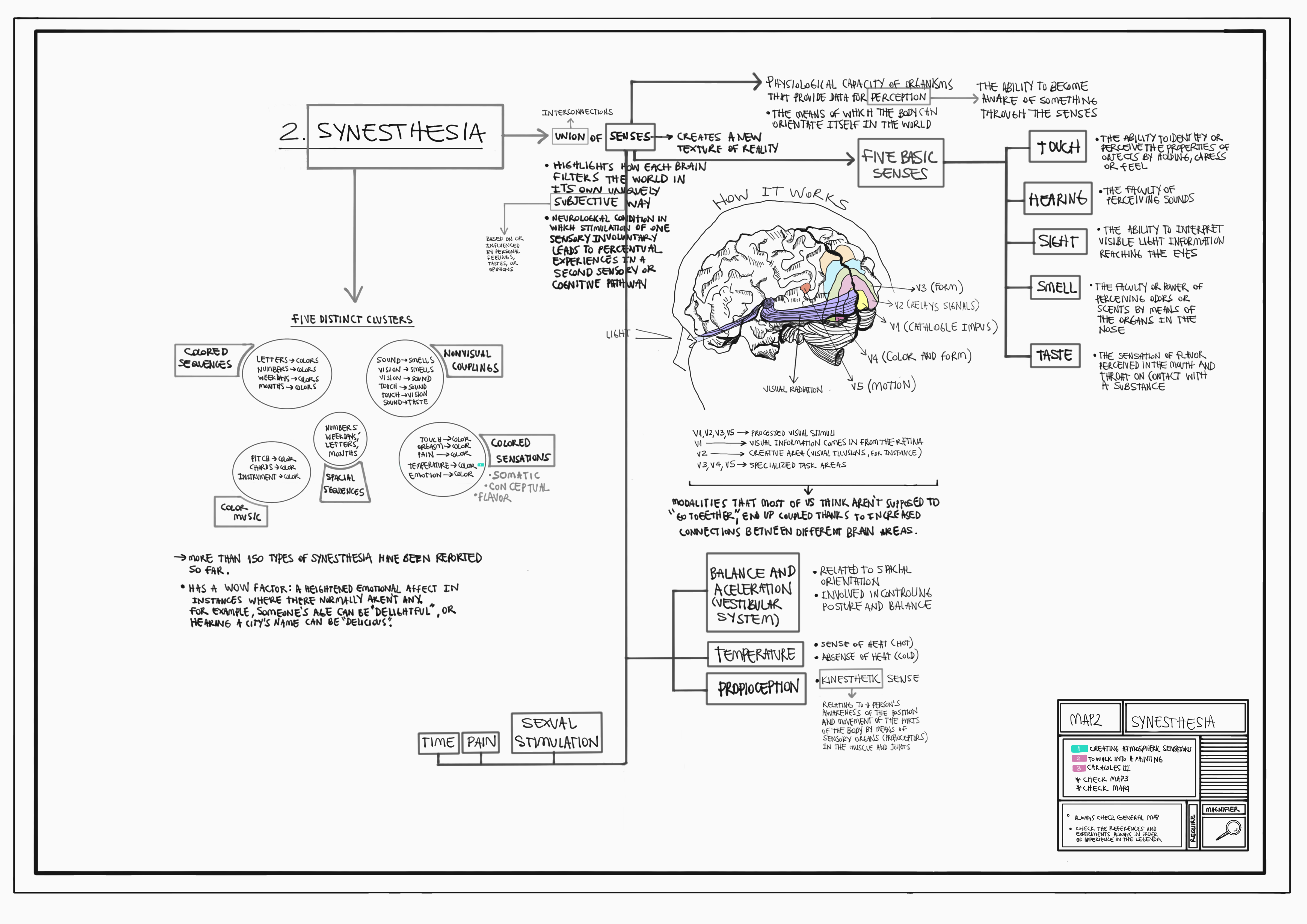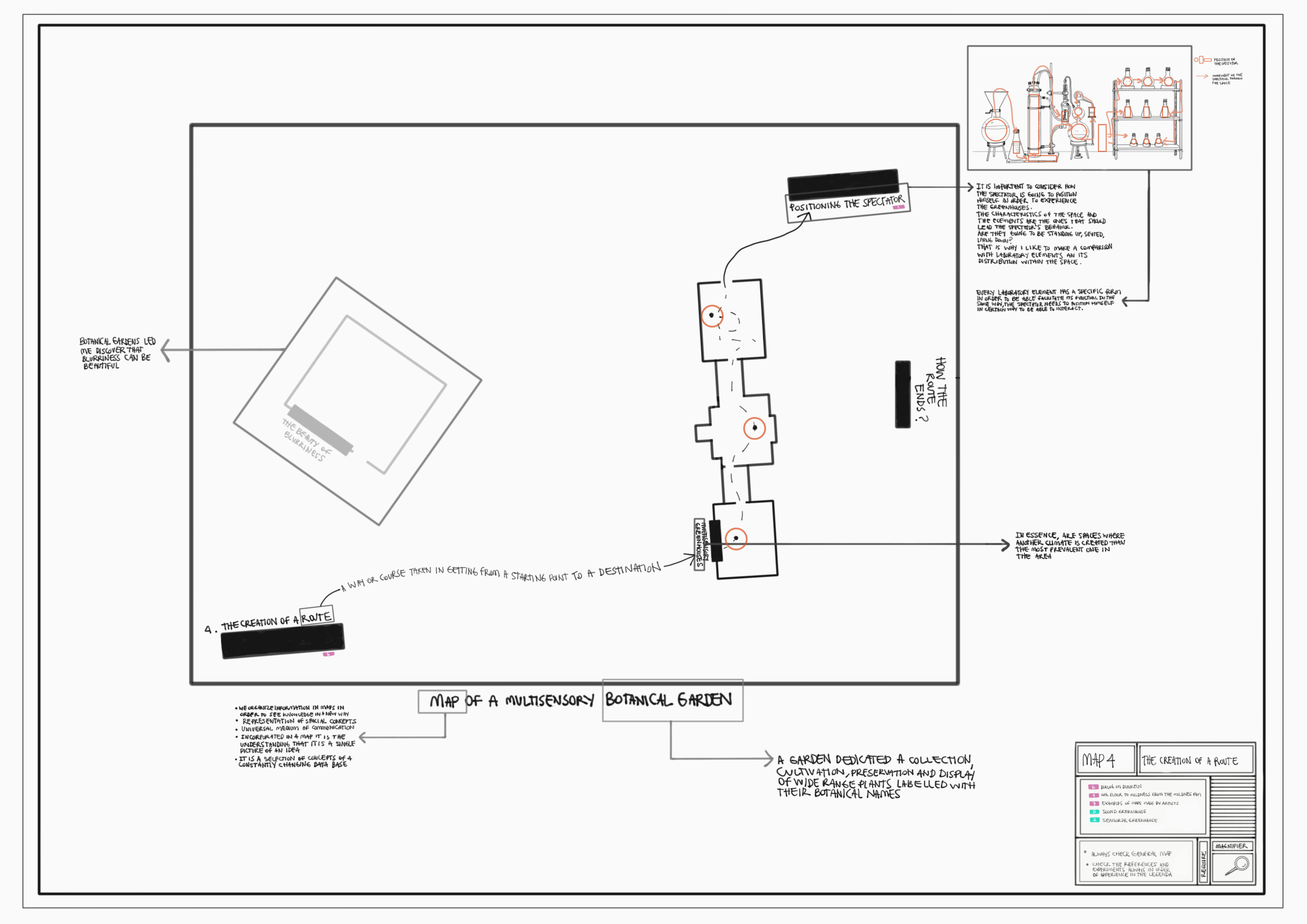Mapping as a Method
Digital Drawings. Research Document in book art format.This is a series of four maps that are part of my research document from the MA Scenography called A Route through the Multisensory Greenhouses. Each of these maps are composed of four layers that overlap each other. The research document contains instructions for the reader to navigate each map.
MAP1: First connections: Blurriness, Focus, Macular degeneration
In MAP1, you will find a description about blurriness and how it is connected to focus and macular degeneration.
By viewing this map, you will find out about the starting point of the research. You will discover how the study about Macular Degeneration leads to the discovery of blurriness and unfocus, as part of the beginning of research and the artistic practice.




MAP2: Synesthesia
In MAP2, you will find the definition of synesthesia and how this condition generates sensory couplings.
By following the routes of this map, you will understand how the senses are related to each other and how the brain of a synesthete works. Meanwhile, you will start following the route through my own interpretation of the combined senses.




MAP3: Touch as a hierarchic sense: The actions of touch, haptics and the relation between body, the interactive space and objects
In MAP3, you will find the definitions of touch, either in the emotional or physical way. Additionally, you will learn how to understand the relation between an object and the sense of touch. This relation is explained to create an interaction with the spectator.
Navigating this map, you will discover why I decided to let the sense of touch be the one that leads the other senses in creating synesthetic experiences. I will address the importance to trigger and create a path between the object/space and the spectator.




Map 4: The creation of a Route
In MAP4, you will discover the reason for the analysis of botanical gardens and their connection to the laboratories. Furthermore, I will show how these spaces have been my references in materializing the route of the senses. Moreover, I will explain the importance of positioning the spectator in creating an interaction within a sensorial space.
Following this map, you will find the creation of the layering of sensations in this spatial environment.
![]()
![]()
![]()
![]()
Documentation: Make Space Exhibition - Graduation show 2020
Photo credit: Lea Groeliker and Silvana Hurtado Dianderas.
![]()
![]()
![]()
![]()
![]()
![]()
![]()
All website content is © Silvana Hurtado Dianderas, 2014-2024.
CARGO COLLECTIVE, INC. LOS ANGELES, CALIF. 90039—3414







